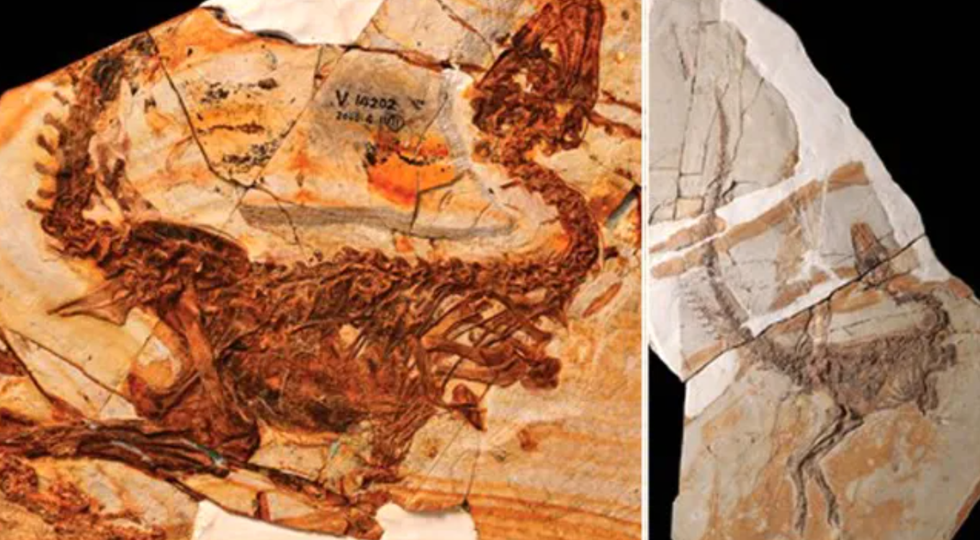Researchers found the remains of two rodent-like mammals in the gut of the dinosaur's fossil
Don't Miss
Most Read
Trending on GB News
Scientists have discovered two new feathered dinosaur species in northeastern China, hidden in 125-million-year-old fossils.
The species, named Sinosauropteryx lingyuanensis and Huadanosaurus sinensis, both lived in China's Jehol Biota region.
This area is rich in well-preserved fossils of life forms that existed between 133 to 120 million years ago.
The discovery sheds new light on the diversity of two-legged theropod dinosaurs that once roamed China and the ecosystem they inhabited.

Scientists have discovered two new feathered dinosaur species in northeastern China, hidden in 125-million-year-old fossils
National Science Review
Huadanosaurus sinensis stood out among its relatives with robust jaws and powerful neck muscles.
These features enabled it to efficiently hunt and kill mammals with its strong bite force.
Remarkably, researchers found the remains of two rodent-like mammals in the gut of this dinosaur's fossil.
This represents the first direct evidence of dinosaur-mammal predation in this ancient ecosystem.
"Huadanosaurus likely caught the small prey with its mouth, quickly killed its prey using the strong bite force of its maxillary teeth, and swallowed the prey whole during the hunt," scientists wrote in the study.
MORE ARCHAEOLOGY BREAKTHROUGHS:
The other dinosaur, Sinosauropteryx lingyuanensis, was only about 1.2 metres in length and likely preyed on birds.
It has been named after the Chinese city Lingyuan, where the fossils were discovered.
The feathers covering Sinosauropteryx likely served as camouflage, helping the dinosaur hide even under abundant direct sunlight in open areas.
This suggests it may have been active during both day and night.
Researchers have classified Sinosauropteryx into a distinct group of dinosaurs called Sinosauropterygidae.
Although both dinosaurs appear to have been similar in size, scientists say there was likely no competition between them.
This was due to their specialisations for hunting different prey items.

Anatomy of Sinosauropteryx lingyuanensis (top) and and Huadanosaurus sinensis (bottom)
National Science Review
While Sinosauropteryx may have been active during both day and night, Huadanosaurus is believed to have been nocturnal.
"In addition to differences in hunting style and prey, the active time of Sinosauropteryx may differ from Huadanosaurus," scientists wrote.
The findings point to diverse hunting styles among these small two-legged dinosaurs inhabiting this section of the Jehol Biota.
Scientists suspect the unique composition of dinosaurs in this region hints at a lack of species exchange with other areas.
This isolation may have been due to geographic barriers created by the Earth's crust movements or sporadic volcanic eruptions.
The formation of isolated rift basins—small troughs caused by crust extension preceding continental breakups—likely hindered species intermixing.
"This isolation prevented the ecosystem on the North China Craton from interacting with other areas during that time," researchers write.
"The heightened selection pressure resulting from species competition in these isolated rift basins could have propelled the diversification of theropods."









